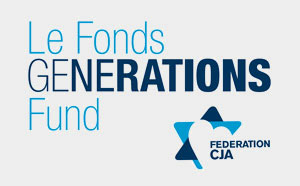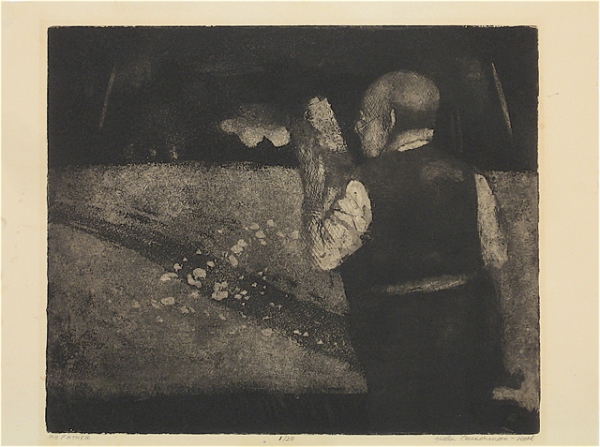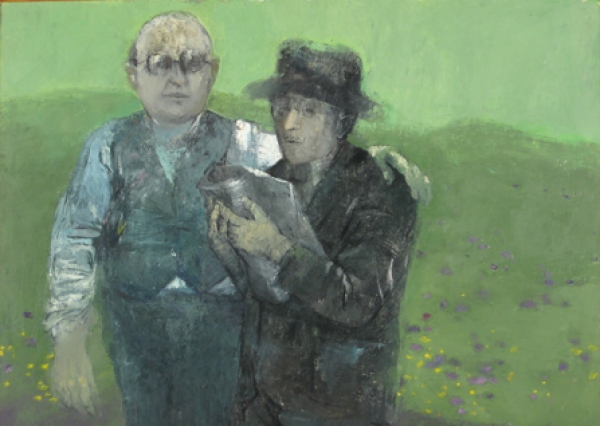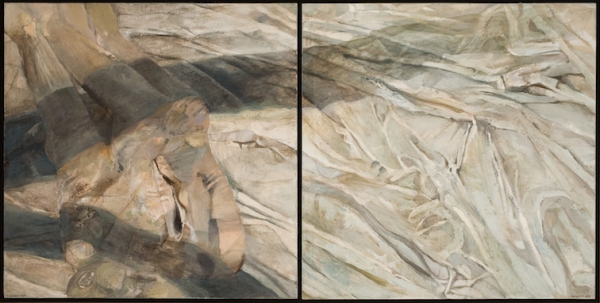Ghitta Caiserman - Montreal Artists School
1946 - 1952
1421 Mackay
Ghitta Caiserman (1923-2005) was a well-known Canadian Jewish painter in the second half of the 20th century, a period of significant changes in the art world. In Canada, modernity was expressed through the portrayal of landscapes, while in Quebec this was represented through a shift towards abstraction. Caiserman stood out with her portraits and personal approach to representing reality.
Ghitta Caiserman’s parents, Sarah (Wittal) Caiserman (1893-1967) and H.M. Caiserman (1881-1950), were of Romanian-Jewish heritage. Sarah Caiserman was a pioneering businesswoman who was the founder of Goosey Gander, a children’s wear company, and was also active in the Labour Zionist Farband [union]. H.M. Caiserman helped found the Jewish Immigrant Aid Society and the Canadian Jewish Congress, two organizations central to Jewish communal life in Montreal. As with many Eastern European Jews of the time, H.M. Caiserman was a socialist. He was part of the Labour Zionist movement as well as a local leader of the United Garment Workers of America union. Ghitta Caiserman inherited her parents’ socialist values and also became involved in leftist organisations. Although she took a very personal approach to representation, her social values also permeated her artworks in her choice of subjects. Moreover, H.M. Caiserman also had an interest in culture; he published a book on Yiddish poets and reviewed numerous art exhibitions in the Keneder Adler. He even helped his daughter gain exposure by positively reviewing her works under a different pen name.
Ghitta Caiserman started her artistic career at a young age under the instruction of Alexander Bercovitch. When she was 13 years old she was included in an exhibition of young artists organised by the Art Association of Montreal (today the Montreal Museum of Fine Arts). She studied art at the Parsons School of Design in New York from 1939 to 1943, at the Art Students’ League of New York, and at the École des beaux-arts de Montréal. Throughout her studies she met various well-known artists such as Harry Sternberg, a social realist, and Albert Dumouchel, an important painter during the modern period in Quebec. She married Alfred Pinsky in 1945, with whom she founded the Montreal Artists School. In 1954, she gave birth to her daughter, Kathe, who would inspire her for several artworks, such as Beach Still Life (1955) and First Steps (1956). Ghitta and Alfred Pinsky divorced in 1959, and she remarried Max Roth, a Montreal-based architect, in 1962. In addition to her artistic career, Ghitta Caiserman taught at the Sir George William College (Concordia University) and at the Saidye Bronfman Centre. She gave summer classes in various universities outside of Montreal including Queen’s University, Mount Allison Universtity, and Mount St. Vincent University.
Ghitta Caiserman is mainly known for her paintings, but lithography and drawing were very important in her experimental process as well. As Donald F. P. Andrus pointed out in the catalogue he wrote for the 1981 retrospective exhibit of her work, the common thread linking her various themes is her way of representing her subjects according to her own perception of reality and her own life experience. “Specific social concerns and the formalistic rhetoric of painting should always, in the context of Caiserman, be seen as secondary to her primary fascination with her unfolding perceptions of where she exists in the greater scheme of things.” From expressionism to surrealism, or from social subjects to still-lifes, her capacity of interpreting rather than simply looking at her subjects is what made Ghitta Caiserman’s work special.
Compiled by Valérie Hénault
Links
Liens
Sources
Andrus, Donald F. P. Ghitta Caiserman-Roth: A Retrospective View, 1947-1980. Montreal: Sir Georges Williams Art Galleries, 1981.
Andrus, Don F. Ghitta Caiserman-Roth.” The Canadian Encyclopedia. 2013.
Brown, Michel. Ghitta Caiserman-Roth, 1923-2005. Jewish Women’s Archive. 2009.
Caiserman-Roth, Ghitta.Interview by Leah Sherman.Montreal: Sir Georges William Art Galleries, Concordia University, November 1981.
Gagnon, François-Marc.“Peintres juifs et modernité. Montréal 1930-1945. Exposition présentée au Centre Saidye-Bronfman, Montréal, du 6 octobre au 5 novembre 1987.” Review of Peintres juifs et modernité. Montréal 1930-1945. By Esther Trépanier. Canadian Art Review 15, No. 2 (1988): 150-152.
Ghitta Caiserman-Roth. Canadian Women Artists History Initiative. 2013.
Ghitta Caiserman-Roth. Women Artists in Canada. 2000.
Lerner, Loren “Canadian Artists of Eastern European Origin: Ghitta Caiserman-Roth. Art History, Concordia, 1998.
Trépanier, Esther. Ghitta Caiserman-Roth.” Jewish Virtual Library. 2008.
Images courtesy of the collection of the Leonard & Bina Ellen Art Gallery, Concordia.

This project is funded in part by the Government of Canada.
Ce projet est financé en partie par le gouvernement du Canada.
Ce projet est financé en partie par le gouvernement du Canada.
This project is funded in part by the Government of Canada.
© 2011-2015 Museum of Jewish Montreal, All Rights Reserved.
Site by Air Code Design inc. ![]()
© 2011-2015 Musée du Montréal Juïf, Tous droits réservés. Site par Air Code Design inc. ![]()



